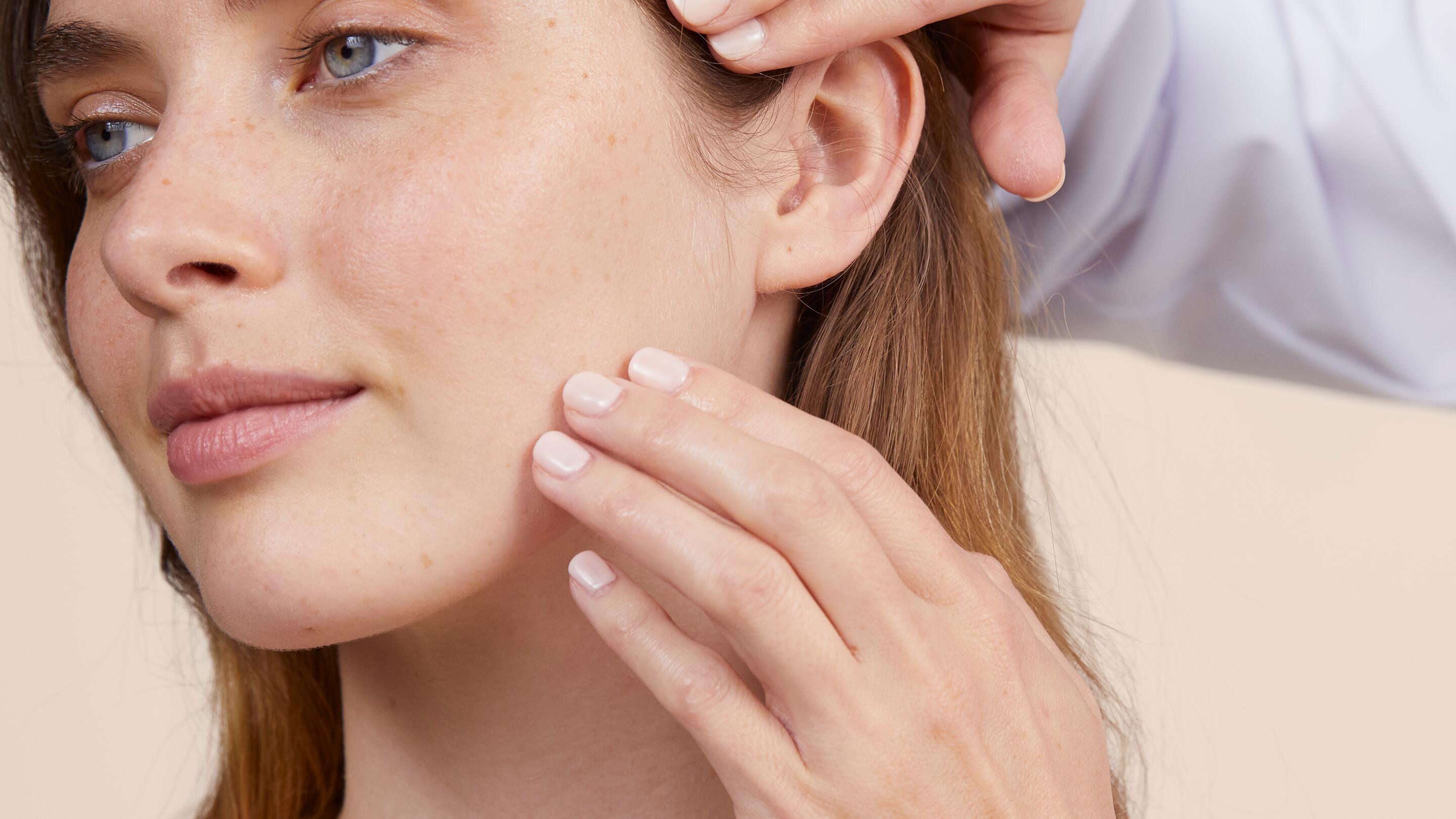How do you know if you have eczema?
The symptoms of eczema on the face are inflammation of the skin, recognisable by red, very dry patches with blisters on the sides of the nose, ears, cheeks, eyelids and neck. These skin lesions cause severe itching, known as pruritus.
This skin condition happens on very dry and damaged skin, with flare-ups of eczema. In other words: periods of worsening symptoms and increased itchiness, interspersed with periods of remission. In general, this type of skin, known as atopic skin, is extremely reactive to cosmetics.
Causes of facial eczema
Facial eczema is a chronic skin condition, a dermatosis, affecting the immune system and the skin cells that act as a barrier to allergens. There are two types of eczema: contact eczema and atopic or constitutional eczema.
Contact eczema
Contact eczema is caused by a hypersensitive reaction of the skin to an allergen, even if there is no genetic predisposition. This reaction takes place in two phases:
- A first exposure to the allergenic product.
- Second contact allows the skin to recognise the substance and overburden the immune system, triggering a localised inflammatory reaction within a few hours.
The list of potential allergens is extensive:
- Chemicals (paint, glue, dye, pesticides, detergents, washing powder)
- Makeup and irritant cosmetic products (perfume, shampoo, nail polish, etc.)
- Pollen
- Metals (nickel, chromium...) and rubber
- Medication (antihistamines, antibiotics, anaesthetics, etc.)
Atopic eczema
Constitutional eczema, also known as atopic dermatitis, is the most common form and not always easy to treat. It affects children and infants from the first few months of life and lasts somewhat through adolescence and adulthood.
Most of the time, the origin of atopic eczema is genetic. Stress and certain environmental factors can also be important factors contributing to an eczema outbreak with a predisposed skin condition.
Immunological and skin abnormalities are passed on from generation to generation or appear as a result of environmental stresses. It’s then easy for the allergenic molecules to penetrate the epidermis and trigger intense reactions from the skin's immune defences, such as the inflammation typical of eczema.
Is eczema contagious?
Because facial eczema is not an infectious skin condition it is not contagious.
How do you treat eczema on the face?
People with facial eczema should first be treated by a health professional, preferably a dermatologist. The doctor will first try to identify the cause and the possible allergen responsible in the case of contact eczema. They will then call in an allergist to carry out skin tests.
The doctor can then prescribe an appropriate treatment. This usually takes the form of topical corticosteroids applied locally to the eczema patches. Depending on the intensity of the symptoms, the doctor may also recommend:
- Antihistamines if the itching is too severe
- Antibiotics and antiseptics to counteract bacterial superinfection
- Gentle hygiene products and an emollient for maintenance
- Psychological support if stress is identified as the main cause
Which cream should you use for eczema on the face?
Anti-inflammatory medical treatments containing corticosteroids are effective at treating acute eczema attacks, as they calm the inflammation and itching, but they do not prevent recurrences.
As a preventive measure and in addition to the treatment, a skincare routine suitable for eczema helps to space out flare-ups.
- To cleanse atopic skin, the Ultra-Rich Cleansing Bar and , used with lukewarm water, cleanse the skin without aggravating the skin's dryness. The lipids in these facial cleansers nourish and restore the skin barrier.
- Additional rinsing with Thermal Spring Water Spray soothes and calms facial discomfort and redness.
- Emollients are the ultimate moisturising, nourishing and anti-itching daily care products for facial eczema. Our laboratories have formulated hypoallergenic, fragrance-free emollients to restore the skin's barrier function and respect the cutaneous flora of atopic skin. The is recommended for dry, itchy skin and the XeraCalm A.D. Lipid-Replenishing Balm is richer for very dry, itchy skin.
- You could also apply XeraCalm A.D Lipid-Replenishing Cream as a day cream as its texture is quite light and XeraCalm A.D Lipid-Replenishing Balm as a night cream as its formula replenishes more lipids.
- For intense itching, for example on the ears, nose, neck or even the eyelids, XeraCalm A.D. Soothing Concentrate immediately soothes.






